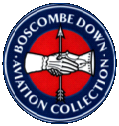|
Two Supermarine Swift prototypes to specification E.41/46 (VV106 and VV119) were ordered 0n the 13th March 1947 and were built as Type 510 and 535 respectively. There then followed a number of contracts for pre-production, Mk1, Mk2, Mk3, Mk4, FR.5, F.4, PR.6. FR.6, and F7 for a grand total of 499 aircraft, but of these only 193 aircraft plus 4 prototypes were built the remainder being cancelled at various times. The main reason for cancellation of the Swift was that orders for interceptors overstretched the available national finances and were incompatible with the end of the fighting in Korea. If both Swift and Hunter production had continued, the peak delivery of 50 fighters a month would have been excessive for peacetime requirements. In fact both programs were cut back and ultimately the Swift was discontinued altogether. Seventy five F7 were ordered but only 14 were built of which two were prototypes. The F7 were delivered to RAF Valley and became the first British fighters to be equipped with guided weapons, the Blue Sky missiles which were later renamed Fireflash. The first production F7 was XF113 which was delivered to Boscombe Down on the 15th November 1956. The aircraft was used for handling trials and to determine limiting speed and Mach numbers. Following the trials it was returned to Vickers Armstrong at South Marston on the 25th February 1957 for the incorporation of some modifications. From there it was allotted to the Empire Test Pilots School then based at Farnborough from the 7th July 1958 to the 4th July 1961 for Test Pilot Training. The aircraft was struck off charge on the 31st October 1961 and was used as a source of spares for XF114. The remains were sold to a scrap dealer in 1965 and then the nose section was sold on. It is believed that the rear fuselage remains with the scrap dealer. One of the BDAC volunteers acquired the nose in very poor condition and had plans to restore it, but although work did start it did not progress very far. The Collection acquired ownership of the aircraft in January 2007 and restoration started in earnest in May 2007 and was completed in January 2008. A few instruments still need to be sourced and the search continues for these. |

|
BDAC—Old Sarum Airfield Museum |

|
Swift Supermarine F7 XF113 |